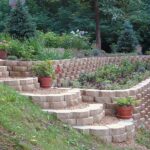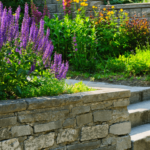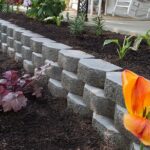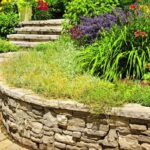A garden retaining wall serves both functional and aesthetic purposes in a landscape design. These structures are typically used to prevent soil erosion, create flat spaces on sloped terrain, and add depth and dimension to a garden. Retaining walls can be made from a variety of materials, including wood, concrete, stone, and brick, each offering unique benefits and design possibilities.
One of the key benefits of a garden retaining wall is its ability to prevent soil erosion. By holding back the soil on a sloped surface, the wall helps to stabilize the ground and prevent water runoff from washing away valuable topsoil. This is especially important in gardens with steep slopes or in areas prone to heavy rainfall.
Retaining walls also create flat, usable spaces in a garden that may have otherwise been unusable due to a steep incline. These terraced areas can be used for planting flowers, shrubs, or vegetables, or as seating areas for outdoor dining and relaxation. Retaining walls can transform a sloped yard into a multi-level garden oasis, adding interest and depth to the landscape.
In addition to their practical benefits, garden retaining walls can also enhance the overall aesthetic of a garden. The choice of materials and design of the wall can complement the style of the surrounding landscape, whether it be formal, rustic, or contemporary. Retaining walls can be used to create focal points, frame beautiful views, or define specific areas within the garden.
When designing a garden retaining wall, it is important to take into account the height and length of the wall, as well as the type of material to be used. The wall should be engineered to withstand the pressures of the soil behind it and built with proper drainage systems to prevent water buildup and potential damage. Consulting with a professional landscaper or contractor can help ensure that the retaining wall is constructed correctly and will last for years to come.
Overall, a garden retaining wall can be a valuable addition to any landscape design, providing both functional and aesthetic benefits. Whether used to prevent soil erosion, create flat spaces on sloped terrain, or enhance the overall aesthetic of the garden, retaining walls can transform a garden into a beautiful and functional outdoor space. With proper planning and construction, a garden retaining wall can add value and beauty to any outdoor environment.
















